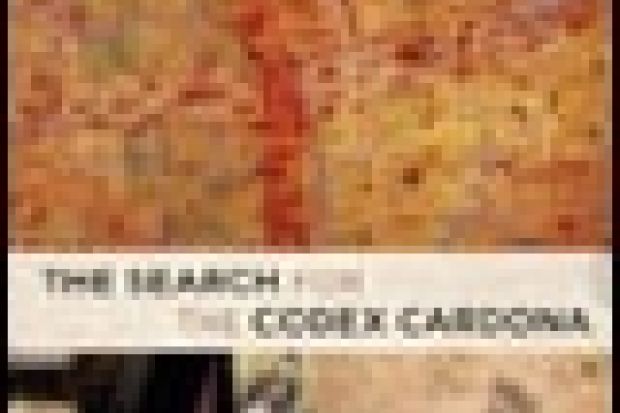This is the strangest book that I have ever reviewed. It is part mystery story, part fantasy and part history. The book concerns the sudden and unexpected appearance in 1982 at Sotheby's London of a magnificent manuscript purported to be a 16th-century Aztec painted book called the Codex Cardona. If authentic, it would have been the most extensive codex yet discovered, totalling 4 pages, with more than 300 painted illustrations and two detailed and extraordinary maps. Such a treasure would revolutionise the study of Aztec civilisation and early-period colonial rule in Mexico. The manuscript was supposedly assembled under the direction of one Captain Alonzo Cardona y Villaviciosa between the years 1550 and 1556. And yet there is no record of this captain, and no expert had ever heard of the Codex Cardona. Herein lies the mystery that this book sets out to solve.
In 1985, the author, historian Arnold Bauer, witnessed anthropologists bent over the manuscript trying to determine its authenticity. He immediately became enthralled with this remarkable work of art. The following year, the manuscript's anonymous owner withdrew it from public view only for it to reappear at Christie's auction house in New York, in 1999. After that occurrence, the codex vanished. All that remains are about 200 colour slides of the folios, some of which are reproduced in Bauer's book. The author spent years in the attempt to hunt down and learn the fate of the Cardona. Along the way, in true mystery style, he ran across shady characters, puzzled scholars, eccentric book collectors, aloof museum professionals and a former Israeli secret agent.
The Cardona was examined by authorities who reached inconclusive results. Suspiciously, it was manufactured from indigenous amate paper rather than the European paper that was more common for a work from the mid-16th century. The script and ink, however, were appropriate for the time, and, significantly, the work covers topics that could have been known only by people living during the early colonial period. For example, the manuscript refers to houses and murals that were buried under rubble and revealed only during the 1980s. The authors of the codex also exhibit detailed knowledge of early colonial Mexico that today only a true expert would possess. This level of knowledge would be unlikely to be possessed by a forger. Bauer concludes, and asserts provocatively, that it could have been faked only by some well-known researcher such as Robert Barlow, or even the renowned contemporary scholar Miguel Leon-Portilla. Carbon-14 dates on the paper were inconclusive, probably because of contamination.
The book reads like a novel rather than a historical tract. Bauer occasionally engages in fantasy solutions that he projects on to the scant data that he was able to uncover. Thus, near the end of the work he paints a scene in which his friend travels to Spain and makes contact with the codex's current owner. Unfortunately, the scene never took place, and the Codex Cardona has never been located. Bauer concludes that the work is authentic but he fears that the folios have been dispersed among private collectors and will never again see the light of day. He has his fictitious character near the end of the book state that it really does not matter whether the Cardona was produced by 16th-century Aztecs or some modern descendants of these same people - the art stands on its own. In my view, the problem here is that the author became obsessed with the codex as an object of art rather than a document containing important historical and cultural information. Authenticity is critically important if the codex is to contribute to our understanding of ancient Aztec civilisation.
The Search for the Codex Cardona: On the Trail of a Sixteenth-Century Mexican Treasure
By Arnold J. Bauer
Duke University Press 208pp, £64.00 and £16.99
ISBN 9780822345961 and 46142
Published 23 February 2010
Register to continue
Why register?
- Registration is free and only takes a moment
- Once registered, you can read 3 articles a month
- Sign up for our newsletter
Subscribe
Or subscribe for unlimited access to:
- Unlimited access to news, views, insights & reviews
- Digital editions
- Digital access to THE’s university and college rankings analysis
Already registered or a current subscriber? Login
